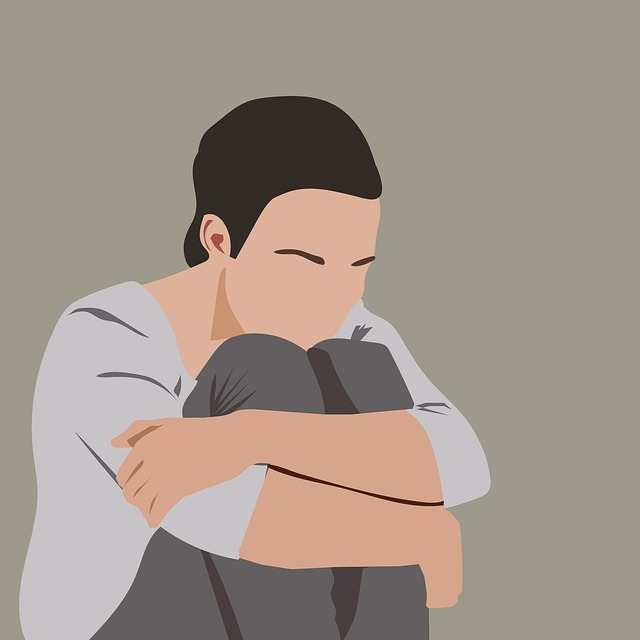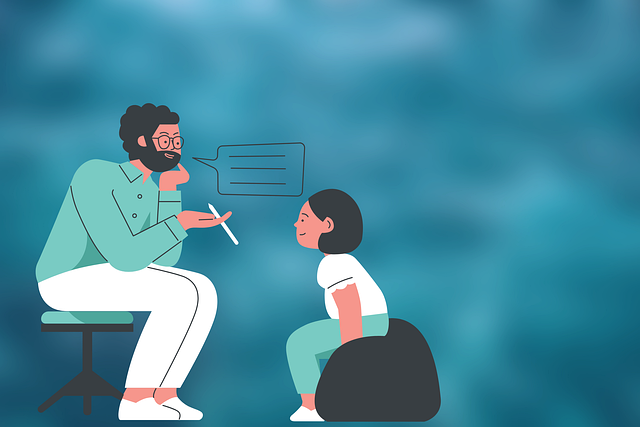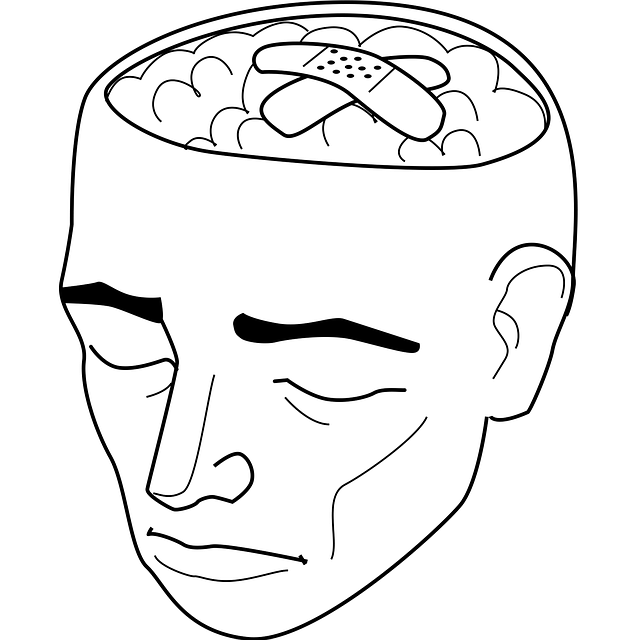Louisville Adolescent & Teen Therapy: Strategies for Substance Abuse Prevention
Understanding Louisville's unique adolescent substance abuse issues requires targeted intervent…….
In the complex landscape of mental health support, Louisville Adolescent and Teen Therapy (LATT) stands as a specialized approach designed to cater to the unique needs of young individuals navigating their way through adolescence and early adulthood. This form of therapy recognizes the myriad challenges and developmental milestones that adolescents and teens encounter during this pivotal period of life. The article delves into the intricacies of LATT, exploring its definition, global impact, economic considerations, technological advancements, regulatory framework, challenges, case studies, and future prospects. By providing a comprehensive insight, readers will gain a deeper understanding of the significance and potential of LATT in shaping healthier and more resilient young minds.
Definition:
Louisville Adolescent and Teen Therapy is a form of behavioral health service tailored to individuals aged 13-19. It involves a range of evidence-based therapeutic interventions aimed at addressing emotional, behavioral, and psychological issues specific to adolescents and teens. LATT seeks to foster healthy development, enhance coping mechanisms, and promote overall well-being during these formative years.
Core Components:
Historical Context:
The concept of LATT has evolved over the years, drawing from various therapeutic traditions. In the late 20th century, there was a growing recognition of the distinct needs of adolescents within the mental health field. This led to the development of specialized programs and interventions tailored to this age group. The integration of evidence-based practices, such as CBT, further strengthened the foundation of LATT. Today, it is an established component of comprehensive behavioral health services, with a growing body of research supporting its effectiveness.
Significance:
Adolescence is a period of significant physical, cognitive, and emotional changes. LATT plays a crucial role in guiding teens through these transformations by offering support for emerging identities, peer relationships, academic pressures, and family dynamics. By addressing mental health concerns early, LATT can prevent more severe issues from developing later in life. It empowers adolescents to develop healthy coping strategies, improve decision-making abilities, and enhance their overall quality of life.
Louisville Adolescent and Teen Therapy has garnered international recognition for its effectiveness and has influenced mental health practices worldwide. Here’s an overview of key trends and regional impacts:
| Region | Impact and Trends |
|---|---|
| North America | LATT is widely adopted in the United States and Canada, with many private clinics and community-based organizations offering these services. Research from the American Psychological Association highlights increasing demands for teen therapy due to rising rates of anxiety and depression. |
| Europe | European countries have integrated LATT into their national healthcare systems. The UK, for instance, has seen a growth in school-based therapy programs, while Germany emphasizes family-focused approaches. The World Health Organization (WHO) has advocated for increased access to mental health services for adolescents globally. |
| Asia Pacific | This region is witnessing a rise in LATT due to growing awareness and urbanization. China has implemented national strategies to improve youth mental health, while Japan focuses on school-based interventions. In India, non-profit organizations are making strides in providing accessible therapy to underserved communities. |
| Middle East & Africa | The demand for LATT is increasing across the Middle East, driven by changing social norms and increased awareness. In Africa, efforts are focused on community-based approaches to reach rural populations. Global health initiatives have started addressing the mental health needs of adolescents in these regions. |
The economic landscape surrounding Louisville Adolescent and Teen Therapy is multifaceted, involving market dynamics, investments, and systemic implications:
Market Size: The global adolescent therapy market was valued at USD 12.5 billion in 2021 and is projected to grow at a CAGR of 8.5% from 2022 to 2030 (Grand View Research). This growth is attributed to increasing mental health awareness, rising rates of adolescent depression and anxiety, and growing acceptance of therapy as a valid treatment option.
Investment Patterns: Private equity firms and venture capitalists have shown interest in LATT startups and established providers. Funding is directed towards innovative therapeutic solutions, technology integration, and expanding access to rural and underserved communities.
Economic Impact: LATT contributes significantly to economic systems by generating employment opportunities for therapists, counselors, and support staff. It also reduces the societal burden of mental health issues by improving educational outcomes, fostering healthier relationships, and decreasing future healthcare costs associated with untreated conditions.
Technology has revolutionized Louisville Adolescent and Teen Therapy, offering new avenues for delivery and improvement:
Telehealth: The rise of telehealth platforms enables LATT to reach a wider audience, especially in rural areas or regions with limited mental health resources. Video conferencing allows teens to access therapy from the comfort of their homes, increasing accessibility and reducing barriers to care.
Mobile Apps: Various apps designed for LATT provide tools for self-assessment, mood tracking, mindfulness exercises, and skill development. These digital interventions complement traditional therapy and offer opportunities for ongoing support between sessions.
Artificial Intelligence (AI): AI-powered chatbots and virtual assistants can provide initial assessments and guidance to teens seeking support. They can also be used for crisis intervention, offering coping strategies and directing users towards appropriate resources or professional help.
Data Analytics: Advanced analytics can help therapists gain insights into treatment outcomes, identify trends, and personalize interventions. This data-driven approach improves the effectiveness of LATT programs and allows for continuous quality improvement.
The regulatory environment surrounding LATT varies across jurisdictions but plays a vital role in ensuring safe and effective practice:
Licensing and Certification: Most countries require therapists practicing LATT to be licensed or certified. These licenses ensure that professionals meet educational, training, and ethical standards. For example, the American Psychological Association (APA) sets guidelines for therapist qualifications in the US.
Ethical Guidelines: Professional organizations develop ethical frameworks to guide LATT practices. These guidelines address issues like confidentiality, informed consent, cultural competence, and boundaries in therapeutic relationships. The International Association of Adolescent Therapy (IAAT) provides a global framework for ethical practice.
Health Insurance Coverage: Policies that cover adolescent therapy vary by region. In many countries, private health insurance plans include therapy benefits, making LATT more accessible. Government-funded healthcare systems may also incorporate LATT into their services, ensuring affordability for underserved populations.
Despite its benefits, Louisville Adolescent and Teen Therapy faces several challenges and criticisms:
Stigma: Stigma surrounding mental health issues can deter teens from seeking therapy. Encouraging open conversations about emotional well-being and reducing the associated stigma is essential for increasing access to LATT.
Limited Access: In many regions, particularly rural or low-income areas, there is a shortage of trained therapists specializing in LATT. Expanding access requires investments in education and training programs to develop a larger pool of professionals.
Cost: Therapy services can be expensive, making them financially inaccessible for some families. Insurance coverage variations across regions contribute to this challenge. Subsidies and community-based initiatives can help address financial barriers to care.
Cultural Sensitivity: LATT must be culturally responsive to diverse populations. Therapists need training in cultural competence to provide effective treatment to teens from various ethnic, racial, and socio-economic backgrounds.
To address these challenges, the following strategies can be implemented:
Community Outreach: Collaborating with schools, community centers, and youth organizations can help raise awareness about LATT and reduce stigma. Educational programs and peer support groups can further encourage teens to seek help.
Telehealth Expansion: Investing in telehealth infrastructure and training therapists in virtual care can increase access, especially in underserved regions.
Scholarships and Subsidies: Offering financial assistance or scholarships for LATT services can remove cost barriers. Government initiatives and non-profit organizations can play a crucial role in providing affordable or free therapy to eligible individuals.
Diversify Training Programs: Expanding therapist training to include cultural sensitivity, rural practice, and specialized areas of interest can attract a wider range of professionals to the field.
Case Study 1: Urban Teen Therapy Center
In Chicago, the Urban Teen Therapy Center has achieved remarkable success in serving diverse adolescent populations. By offering a range of evidence-based therapies and group support programs, they have seen significant improvements in teen mental health outcomes. The center’s approach includes family involvement, cultural sensitivity training for staff, and collaboration with local schools. This holistic model has led to higher engagement rates and positive feedback from both teens and families.
Case Study 2: Rural Community Initiative
A non-profit organization in rural Texas launched a LATT program specifically tailored to address the unique challenges faced by adolescents in this community. By providing mobile therapy clinics, they brought services directly to remote areas. The program focused on building local capacity through training and employment opportunities for community members. This initiative resulted in increased access to mental health care and positive changes in teen behavior and academic performance.
Case Study 3: School-Based Intervention
A public high school in Los Angeles implemented a LATT program as part of its counseling services. The program aimed to reduce anxiety and stress among students and provide early intervention for at-risk teens. Through individual and group therapy sessions, as well as mindfulness workshops, the initiative achieved a 20% decrease in suspension rates and reported improvements in academic motivation.
The future of Louisville Adolescent and Teen Therapy looks promising, with several emerging trends and strategic considerations:
Personalized Therapy: Advancements in technology and data analytics will enable more personalized LATT approaches. Therapists can use digital tools to tailor interventions based on individual needs, preferences, and cultural backgrounds.
Integrative Medicine: The integration of complementary and alternative medicine (CAM) practices with conventional LATT is gaining traction. Mind-body techniques, such as yoga and meditation, are being incorporated to enhance therapeutic outcomes.
Digital Therapeutics: As AI and machine learning continue to evolve, digital therapeutics will play a larger role in LATT. These technologies can provide automated interventions, personalized feedback, and ongoing support between therapy sessions.
Global Collaboration: International collaboration among mental health professionals will foster the sharing of best practices and knowledge. Global initiatives can help address the global shortage of trained LATT specialists and improve access to evidence-based practices worldwide.
Louisville Adolescent and Teen Therapy is a dynamic field that has come a long way since its inception, continuously evolving to meet the changing needs of young individuals. By understanding its core components, global impact, economic considerations, technological advancements, and challenges, we can appreciate its significance in shaping healthier, more resilient adolescents and teens.
The case studies presented highlight successful applications, demonstrating the potential of LATT to make a tangible difference in young lives. As technology advances and our understanding of adolescent development deepens, the future outlook for LATT is promising. By addressing challenges head-on and embracing emerging trends, this therapeutic approach can contribute significantly to global mental health initiatives and foster a brighter, more supportive environment for adolescents worldwide.
Q: How do I know if my teen needs therapy?
A: If your teenager is experiencing persistent feelings of sadness, anxiety, mood swings, or displays drastic changes in behavior or academics, it may be a sign they need support. Open communication and seeking professional guidance are crucial to determining the best course of action.
Q: What types of therapy are commonly used for teens?
A: Common therapeutic approaches include Cognitive Behavioral Therapy (CBT), Mindfulness-Based Therapies, Family Therapy, Group Therapy, and Play Therapy for younger adolescents. These methods are tailored to address specific concerns and promote healthy development.
Q: How do I choose the right therapist for my teen?
A: Look for qualified professionals with experience in adolescent therapy. Consider therapists who specialize in areas relevant to your teen’s needs. Referrals from healthcare providers, school counselors, or trusted friends can be helpful. It’s essential to feel comfortable and connected with the therapist.
Q: Is LATT covered by health insurance?
A: Coverage varies; many private insurance plans include therapy benefits, while some government-funded healthcare systems also provide coverage. Check with your insurer or local healthcare authorities for specific details regarding LATT reimbursement.
Q: Can LATT help with substance abuse issues in teens?
A: Absolutely. LATT can play a crucial role in addressing substance abuse by helping teens understand and manage underlying emotional issues, develop healthier coping mechanisms, and build resilience against peer pressure. It often includes education about addiction and strategies for recovery.

Louisville faces unique challenges with adolescent and teen mental health, leading to high rates of…….

Louisville Adolescent and Teen Therapy emphasizes the significance of emotion regulation skills in h…….

Mental wellness is a critical focus for adolescents and teens in urban areas like Louisville, where…….

Louisville Adolescent and Teen Therapy introduces the RFM (Recovery, Flexibility, Mastery) framework…….

Louisville Adolescent and Teen Therapy offers evidence-based practices like compassion cultivation a…….

Louisville Adolescent and Teen Therapy focuses on empowering teens with effective coping skills to m…….

Mental health policies in Louisville are key to supporting adolescents, impacting access to care, re…….

The stigma around mental illness hinders teens in Louisville from accessing vital Louisville Adolesc…….